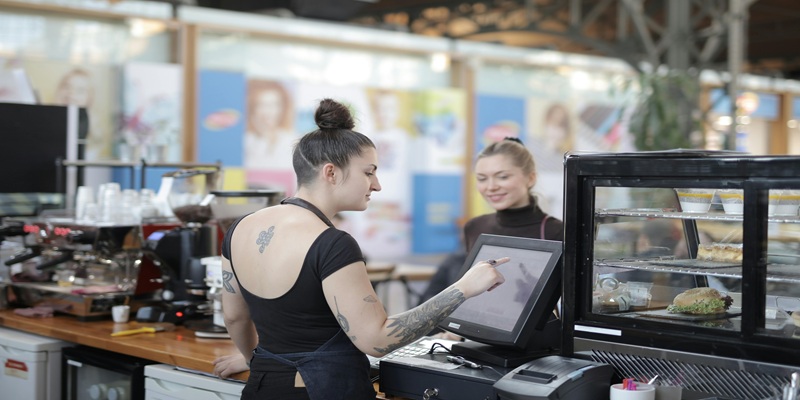The restaurant industry thrives on creating memorable moments—delicious food, inviting ambiance, and impeccable service. Yet, even the most exceptional dining experience can falter at the final step: payment. Long waits for checks, clunky card machines, and outdated payment methods often leave customers frustrated. Today, innovative payment solutions are transforming this critical touchpoint, ensuring seamless transactions that align with modern diners’ expectations. Let’s explore how restaurants can leverage these tools to elevate satisfaction, efficiency, and loyalty.
The Transformation of Payment Systems in Restaurants
Gone are the days of cash-only registers and manual receipt tracking. Over the past decade, payment systems have evolved dramatically, driven by technology and shifting consumer preferences. Initially, credit card terminals simplified transactions, but they were just the beginning. Now, restaurants are adopting solutions like mobile payments, contactless cards, and integrated point-of-sale (POS) systems.
This shift isn’t merely about convenience—it’s a response to diners’ demands for speed and flexibility. For instance, 73% of consumers prefer businesses offering contactless payment options, according to a 2023 Visa report. As a result, restaurants that modernize their payment infrastructure not only streamline operations but also future-proof their business.
Contactless Payments: Speed and Safety Combined
Contactless payments have emerged as a game-changer, especially post-pandemic. By enabling customers to pay via tap-to-go cards, smartphones, or wearables, restaurants reduce physical contact and wait times. A study by Mastercard revealed that 82% of consumers view contactless payments as cleaner and safer than traditional methods.
Moreover, this technology accelerates table turnover. Servers no longer need to handle cards or cash repeatedly, allowing them to focus on delivering attentive service. For example, a busy café in New York reported a 15% increase in daily sales after adopting contactless terminals, as faster payments enabled more customers to be served during peak hours.
Mobile Wallet Integration: Catering to Tech-Savvy Diners
Mobile wallets like Apple Pay, Google Pay, and Samsung Pay are reshaping how diners interact with payment systems. These platforms store payment information securely, allowing customers to complete transactions in seconds. Additionally, mobile wallets often integrate loyalty programs, offering rewards for frequent visits.
Restaurants that embrace this trend cater to younger, tech-savvy audiences. Consider this: 60% of millennials prefer mobile payment options over physical cards. By integrating mobile wallets into their POS systems, eateries can attract this demographic while reducing the risk of fraud.
Integrated POS Systems: Streamlining Operations
Modern POS systems do far more than process payments—they unify every aspect of restaurant management. From tracking inventory to managing reservations, these platforms centralize data, enabling owners to make informed decisions. For instance, cloud-based POS systems like Toast or Square provide real-time analytics on sales trends, staff performance, and popular menu items.
Furthermore, integrated POS systems enhance the customer experience. Servers can split bills effortlessly, apply discounts, or send digital receipts directly to a guest’s email. This eliminates errors and ensures a smoother checkout process. A family-owned bistro in Chicago saw a 20% reduction in billing complaints after switching to an all-in-one POS system.
Enhancing Customer Loyalty Through Payment Innovation
Payment solutions aren’t just transactional—they’re instrumental in building lasting relationships. Many platforms now offer branded mobile apps where customers can pre-order meals, earn rewards, and store payment details. For example, Starbucks’ app combines payment processing with a loyalty program, driving repeat visits and higher spending.
Similarly, dynamic QR code payments allow diners to access menus, place orders, and pay without interacting with staff. This hybrid model appeals to convenience-driven patrons while freeing up employees to focus on personalized service.
Security: Protecting Data and Building Trust
With cyber threats on the rise, secure payment systems are non-negotiable. Restaurants must prioritize PCI-DSS compliance and encryption to safeguard customer data. Tokenization, which replaces sensitive card details with unique codes, adds another layer of protection.
Investing in secure systems also builds trust. Diners are more likely to return to establishments where they feel their information is safe. A 2022 survey by Norton found that 68% of consumers avoid businesses that have experienced data breaches.
The Prospect of Restaurant Payments: Trends to Watch
Looking ahead, emerging technologies promise to redefine payment experiences. Biometric authentication, such as fingerprint or facial recognition, could replace traditional PINs. Voice-activated payments via smart devices may also gain traction, particularly in drive-thrus or pickup scenarios.
Additionally, blockchain-based solutions might streamline cross-border transactions for international diners. While these innovations are still evolving, forward-thinking restaurants should stay informed to remain competitive.
Conclusion
Payment solutions are no longer a backend necessity—they’re a strategic tool for enhancing the dining journey. By adopting contactless payments, mobile wallets, and integrated POS systems, restaurants can reduce friction, boost efficiency, and foster loyalty. Ultimately, the goal is simple: Ensure that the last interaction a customer has is as positive as the first. In an industry where every detail matters, modern payment systems are the key to turning satisfied diners into lifelong patrons.



































